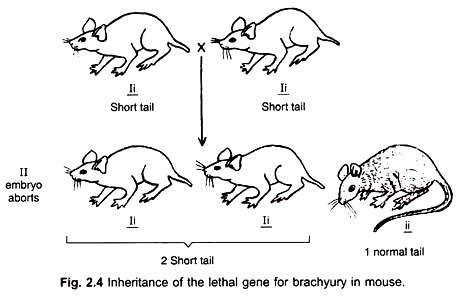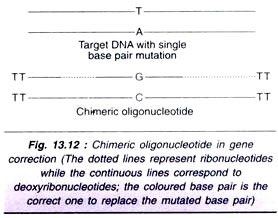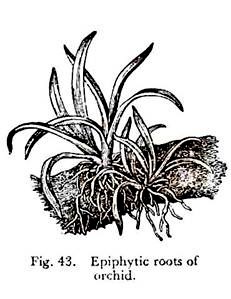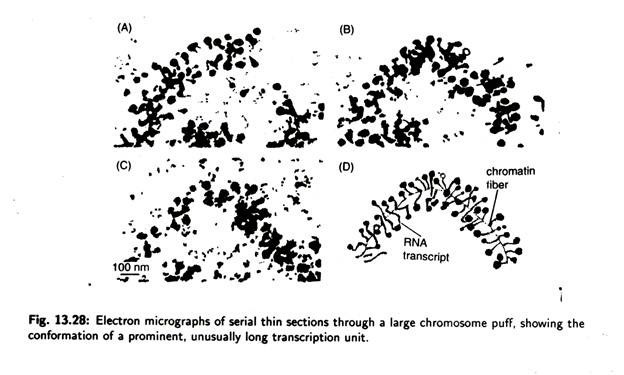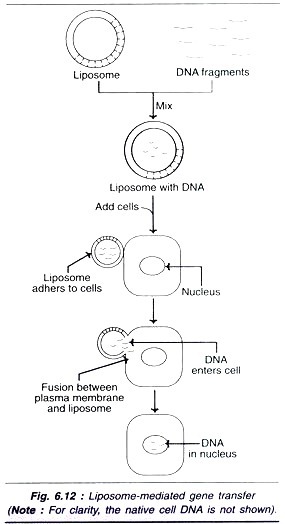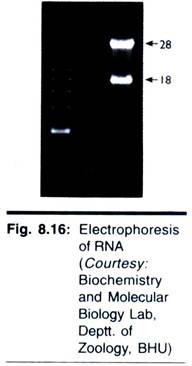ADVERTISEMENTS:
Read this article to learn about Families of Flowering Plants and their Economic Importance!
Some of the most important families of flowering plant and their economic importance are as follows:
Family – Papilionaceae (fabaceae):
Distribution:
The family includes about400 genera. The members are distributed in the temperate regions of both northern and southern hemisphere. In India, the family is found both on hills and plains.
Habits:
Plants are mostly herbs and shrubs, (often climbing). Few tree species are also known. Plants may be xerophyte, hydrophytes or mesophytes. Most of the plants are cultivated in fields.
ADVERTISEMENTS:
Root:
Tap root branched, bearing root nodules, containing symbiotic nitrogen fixing bacteria (Rhizobia etc.)
Stem:
Erect, branched, angular or cylindrical, may be herbaceous or woody. Stem climbs with the help of tendrils.
Leaf:
Ramal or cauline, alternate, simple or compound (digitate or pinnate). Leaves are stipulate (stipules arefoliaceous and large).
Inflorescence:
Racemose, raceme, spikes or head.
Flower:
ADVERTISEMENTS:
Flowers are pedicellate, zygomorphic, irregular, pentamerous, hermaphrodite, complete, perigynous, and papilionaceous.
Calyx:
Sepals 5, gamosepolous (fused), equal or unequal, united in the form of tubular calyx. Aestivation is ascending imbricate.
Corolla:
ADVERTISEMENTS:
Petals 5, Unequal. Uppermost is the largest, it is called standard or vexilluin. Two free lateral petals are called wings or alae. The anterior united pair of petals is called keel or carina. The keel encloses stamen and pistils. Aestivation is descending imbricate.
Androecium:
Stamens are inserted on a disc, below the calyx. Stamens are generally 10, arranged in a ring. Nine stamens are united and remaining one is free (Diadelphous)
Gynoecium:
ADVERTISEMENTS:
Carpel one, free, semi superior ovary, unilocular, marginal placentation, short, hairy stigma.
Fruit:
Legume or pod or lomentum.
ADVERTISEMENTS:
Seed:
Exalbumincasus endosperm). Usually flattened.
Economic Importance of family:
The plants of this family are unique in that they have root nodules which contain nitrogen fixing symbiotic bacteria. Thus the products of these plants are the rich source of proteins.
i. Plants used as food:
ADVERTISEMENTS:
The family contains many food plants including pulses, grams and soyabean etc. Important such plantsare – Arhar (Cajanuscajan), Masoor (Lens esculenata). Urd (Phaseolus mungo), Mungo (Phaseolus aureus), Lobia (Vigna sinenis), Pea (Pisum sativum), Gram (Cicer arietinum), Soyabean (Glycine max).
ii. Plants used for oils:
Groundnut (Arachis hypogea), Soyabean (Glycene soya)
iii. Plants used for ornamental purposes:
Sesbania grandiflora, Sweet pea (Lathyrus odomtus), Lupin (Lupinus), Butea monosperma etc.
iv. Plants giving timber and fibres:
ADVERTISEMENTS:
Shishum (Dalbargia sisso), Sunn hemp (Crotolaria juncea).
v. Plants used for other purposes:
Indigo plant (Indigofera tinctoria) it gives indigo dye. Plant Butterfly pea (Clitoria ternatea) is used for medicinal purposes.
Important Plants:
I. Pea (Pisum sativum)
II. Gram (Cicer arietinum)
III. Soybean (Glycine max)
IV. Sweet pea (Lathyrus odoratus)
V. Shishum (Dalbargia sisso)
VI. Sunn hemp (Crotolaria guncea)
VII. Groundnut (Arachis hypogea)
VIII. Testu plant (Butea monospenna)
Family – Malvaceae (Mallow Family)
Systematic Position
Distribution:
Malvaceae is a cosmopolitan family which includes about 80 genera and 1500 species. Most of the species and confined to tropics and subtropics.
Habits :
Annual, biennial, herb, shrub or tree, mucilage rich.
Root:
Tap root system, branched.
Stem:
Erect, branched, cylindrical, usually mucilaginous.
Leaves:
Stipulate, alternate, simple, petiole entire or lobed, reticulate venation.
Inflorescence:
Solltary axillary or terminal racemose or hellicoid cyme.
Flower:
Bracteate or ebracteate, actinomorphic, pedicellate, hermaphrodite, complete, hypogynous, pentamerous. Usually protected by a whorl of 3 to 12 bracteoles, collectively termed as Epicalyx. In Sida and Abutilon epicalyxis absent.
Calyx :
Sepals 5, basally connate or polysepalous, valvate aestivation, usually epicalyx present.
Corolla :
Petals 5, polypetalous but basally fused with staminal tube, twisted aestivation, showy.
Androecium:
Numerous stamens, monadelphous, filaments fused to form astaminal tube, adnate to basal part of petals, epipetalous, anther lobes unilocular (monothecous), reniform, extrose.
Gynoecium:
3-carpels, syncarpous.multiloculai, ovary superior, axile placentation eachlocule has l-oo ovules, style single and simple, stigma multilobed.
Fruit:
Dry loculicidal capsule (Abelmoschus and Gossypium) or carcerulus (Abutilon and Althaea).
i. Plants used as food-
1. Hibiscus esculentus (=Abelmoschus esculentus) (Hindi – Rhindi): Fruits are used as vegetables.
ii. Plants used in medicines –
1 Urena rependa: Juice extracted from roots and bark is used in hydrophobia.
2. Abutilon indicum: Root, stem, leaves and seeds are used in preparing certain Ayurveda medicines.
iii. Fibre yielding plants:
1. Gossypium sp: Fibres of seed coal are used in textile industry. Important species of cotton are G. arboreum, G. herbaceum and G. barbadense.
2. Hibiscus connabinus, H. mutabilis and H. sabdariffa are used in rope industry Fibre obtained from Urena lobata is used in preparing bags.
iv. Ornamental Plants:
1. Hibiscus rosa-sinensis (China rose)
2. Althea rosea (HollyHock).
FAMILY – ASTERACEAE (COMPOSITAE) (Sun-Flower Family):
Systematic Position:
Distribution:
It is the largest and the most advanced family of dicotyledones. It is represented by over 1000 genera and about 20,000 species. Members of the family are distributed worldwide.
Habits:
Plants are usually herbs or shrubs and rarely trees and climbers. Many plants possess milky juice (latex), while others have watery, resinous and bitter juice.
Root:
Roots are tap and branched. Sometimes these are tuberously thickened (in Helianthus tuberosus).
Stem;
Herbaceous, aerial, erect, branches usually covered with pubescence or glands for the secretion of milky latex.
Leaf:
Simple or compound. Sometimes alternate, acicular (needle like or reduced to scales in xerophytes), exstipulate, petiolate. Surface is hairy. Leaf margins arc entire or serrated. Tip is acute or obtuse, venation reticulate.
Inflorescence:
Racemose, Head or capitulum, with an involuere of bracts. Racemose, rarely in spike. In capitulum, whole inflorescence looks like a single flower. Infect flowers in such cases are small and are called florets.
Flower:
Flowers are arranged in inflorescence in the form of florets – ray floret and disc florets.
Ray florets:
Sessile, unisexual, zygomorphic, irregular, ligulate or bracteate.
Calyx:
Represented by pappus (small hairy structure) or may be absent.
Corolla:
Petals 5, gamopetalous, may be bilabiate or ligulate.
Androecium:
Absent
Gynoecium:
Carpels –2 (bicarpellary), inferior ovary, unilocular, with single anatropous ovule, basal placentation, single (achemal single seeded fruit).
Fruit :
Cypsella (achenial single seeded fruit).
Seed – Non-endospermic.
Disc Florets:
Sessile, bisexual, actinomorphic, regular, bracteatc, complete, epigynous.
Calyx:
Rudimentary, pappus.
Corolla:
Petals 5, gamopetalous, tubular, 5 lobed, swollen near the base (where nectaries are present), valvate aestivation, variously coloured.
Androecium:
5 stamens, opipetalous, alternate with corollalobes, anthers are introse, dithecous. United laterally in to a lube, filaments free, syngenosious.
Gynoecium:
Carpels 2, (bicarpellary), inferior ovary, unilocular, with single anatropous ovule, basal placentation, single (achenial single seeded fruit).
Fruit:
Cypsela (achenial single seeded fruit).
Seed:
Non-endospermic.
Economic Importance of family:
Plants used as food – Lettuce or salad (Lactucn sativa), Sun flower (Helianthus annuus). Medicinal Plants – Salt minis obtained from Artemisia absinthium, Insulin is obtained from Cynara scolymus. For teeth pain, Centipeda orbicularis and Xanthium stramonium are used.
Insecticide – Chrysanthemum cinerarie folium gives natural insecticide – Pyrethrum.
Important Plants:
i. Sun flower (Helianthus annuus)
ii. Lettuce (Lactuca sativa)
iii. Merigold (Tagetus erect us)
v. Zinnia, Chrysanthemum, Tridax.
Family – Cruciferae (Brassicaceae) (Mustard Family):
Distribution:
It includes 350 genera and about 3000 species. The members of the family are cosmopolitan but majority of the members are found in north temperate region.
Habits:
Plants are annual, biennial or perennial herbs.
Root:
Roots are usually tap and branched. Several modifications of tap roots arc found such as fusiform (in Raphanus sativus), conical (in Radish) and napiform (in turnip-Brassica rapa). These modifications mainly serve to store the food materials.
Stem:
Herbaceous, erect, cylindrical, usually reduced or condensed (in turnip and radish etc.).
Leaf:
Simple, alternate, exstipulate and possess simple or branched hairs. Leaves are usually radical or cauline, sub-sessile or sessile lyrate. Radical roots are found in rosettes. Sometimes bulbils are born in the axils of upper leaves which are used for vegetative reproduction.
Inflorescence:
Racemose and usually raceme.
Flower:
Ebracteate, regular (actinomorphic), pedicillate, complete, hermaphrodite, tetramerous, cruciform and hypogynous.
Calyx:
4 sepals, polysepalous, arranged in two whorls of two each. The inner lateral sepals are sometimes pouched at the base and serve as nectar containers. Aestivation is imbricate.
Corolla:
Petals 4, polypetalous, cruciform arranged in a single whorl. These are alternate to the sepals. Each petal is differentiated into a narrow claw and a broad expanded limb, valvate.
Androecium:
6 stamens, arranged in two whorls of 2 and 4. Outer two stamens are short and inner 4 stamens are long, (tetradynamous). At the base of the outer two short stamens are present green glands or nectaries. Anthers are bilobed, basifixed and introse.
Gynoecium:
Bicarpellary, syncarpous, superior ovary, unilocular, but becomes bilocular (due to the development of false septum or replum from the ingrowths of the parietal placentae). Placentation is parietal. Ovules are anatropous or campylotropous. Style is short with bilobed stigma.
Fruit:
Siliqua or silicula. Sometimes it is lomentum (Raphanus sativus).
Seed:
Small, exalbuminous (non endospermic), with large curved embryo. Testa is mucilaginous.
Economic Importance of family:
i. Vegetable yielding plants:
Mustard (Brassica campestris), Cabbage (Brassica oleracea var capitata), Cauliflower (Brassica oleracea var botrytis), Radish (Raphanus sativus).
ii. Oil yielding plants:
Brassica campestris, Rye (B .Juncea) Blackmustard (B. nigra), While mustard (B. alba) etc.
iii. Medicinal plants:
Sisymbrium officinale, Nasturtium indica, Eruca sativa, Lepidium sativum.
iv. Ornamental:
Candytuft (Iberis amara), Myssum, Methiola, Wall flower (Cheiranthus).
Important Plants:
i. Mustard (Brassica campestris)
ii. Cabbage (Brassica oleracea var capitata)
iii. Cauliflower (Brassica oleracea var botrytis)
iv. Radish (Raphanus sativus)
v. Rye (Brassica Juncea)
vi. Candytuft (Iberis amara)
Family -Solanaceae Systematic Position:
Distribution:
The family is represented byabout.2500 species. This family is primarily distributed in tropical America and South America. Family members are also found in temperate regions. Solanum is the largest genus of the family with about 1500 species.
Habits:
Plants are erect or climbing herbs, shrubs or small trees. Solanum nigrum is small annual herb. Datura is large annual herb. Root – Tap root or adventitious.
Stem:
Herbaceous, woody, branched, erect or twining or creeping, (sometimes modified into tubers).
Leaf:
Alternate or opposite (near the inflorescence), rarely whorled. Exstipulate, entire, simple, rarely dissected or pinnate.
Inflorescence:
Cymose or solitary.
Flower:
Pedicellate, hermaphrodite, actinomorphic (usually), regular, hypogynous, complete, pentamerous, bracts or bracteoles absent.
Calyx:
5 sepals fused (gamosepalous), persistent.
Corolla – 5 petals, gamopetalous, funnel shaped, rotate, or tubular, variously shaped. Plicate or convolute (rarely valvate).
Androecium:
5 stamens, epipetalous (fused with petals and Inserted into corolla tube), alternating with petals. Anthers are dithecous, filamentous with unequal length.
Gynoecium:
Bicarpellary, syncarpous, superior ovary, bilocular, axile placentation, many ovules, ovules are anatropous (usually) or amphitropous. Carpels are placed obliquely in the flowers. Style one, stigma is bilobed and capitate.
Fruit:
Berry or septicidal capsule.
Seed:
Albuminous (endospermic), smooth or pitted, curved embryo, embedded in endosperm.
Economic Importance of family:
i. Food Plant–
Potato [Solatium tuberosum), Brinjal (Solanum melongena), Tomato (Lycopersicon esculentum), Red chillies (Capsicumannuum).
ii. Medicinal plants :
Atropine (Atropa belladona), Henbane (Hyoscyamus Niger), Asgandh (Withania somnifera), stramonium or Datura (Datura stramonium) etc.
iii. Ornamented :
Queen of night (Cestrum nocturnum), King of Day (Cestrum diurnum), Petunia (Petunia violacea) etc.
iv. Tobacco Plant :
Nicotiana tabacum and N. rustica provide alkaloid nicotine, which is used for chewing smoking and also as insecticide.
Important Plants:
Potato (Solanum tuberosum)
Tomato (Lycopersicion esculentum)
Atropine (Atropa belladona)
Tobacco (Nicotiacum)
Family – Liliaceae:
Distribution:
Plants are cosmopolitan and chiefly found in temperate and subtropical regions. These plants survive in most varied conditions.
Habits:
The plants are annual, biennial and perennial herbs and shrubs. The plants are mostly xerophytic.








